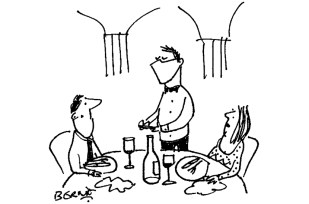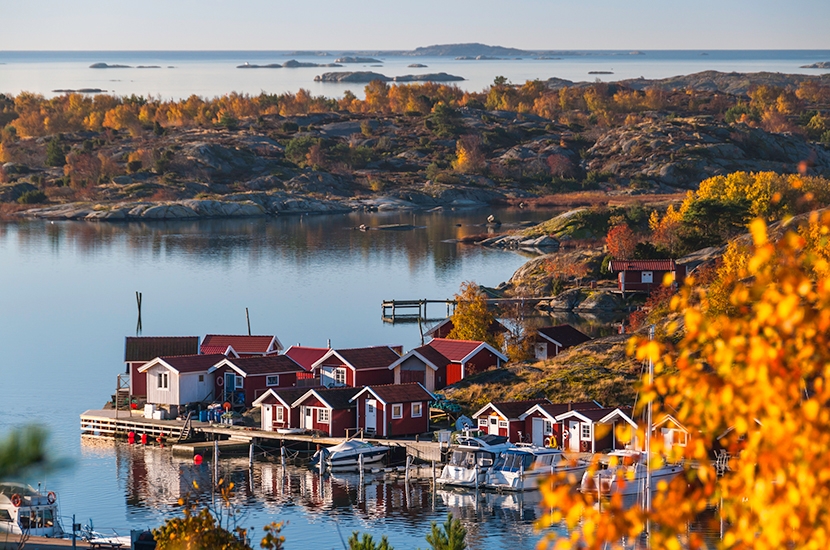An idea gains ground that we shouldn’t go abroad any more: that the very act of travelling without urgent reason is somehow irresponsible. I don’t subscribe to this. To me, travel has always been such an important and productive part of life, a source of knowledge and happiness. So while I can travel, I will.
But quarantine is making it harder. My partner and I belong to what one survey reports is the 18 per cent of quarantined people who actually do stay at home. Much as I love our Derbyshire home, 14 days quarantined in one corner of the Peak District is a serious deterrent from visiting most of the rest of the world.
But not from visiting Sweden, yet. As I write, their Covid case-rate is about a quarter of Britain’s, and our requirement to quarantine does not apply to people arriving from Stockholm. Nor do the Swedes make British visitors quarantine. So off we went on a four-day trip to a country very close to these islands, but which millions of us hardly know. True, I once spent a New Year in a log cabin in the woods in central Sweden: fun, but we saw only snow and trees. Otherwise my last visit was half a century ago. Since then I’ve felt I knew Sweden only by reputation.

That reputation proved so very wide of the mark. Call me ignorant (and I was) but my childish idea of the country was of a sort of frontier land: a few modest conurbations around Sweden’s Baltic and North Sea coast, and then vast swaths of coniferous nothingness punctuated by the occasional clapboard barn and some sweet little Lutheran churches, stretching up towards the North Pole. Culturally I’d (again ignorantly) supposed that apart from Strindberg, a playwright whose work I find impenetrable, and of course Abba… well, what else was there beyond Europe’s most successful purveyor of flatpack furniture? Politically I’d thought of Sweden as slightly sanctimonious, much into good work among the non-aligned and developing countries and ducking the big issues. Domestically (I’d supposed) this was the ultimate cradle-to-grave welfare state, dispiritingly level, unmaterialistic, conformist, distrustful of wealth or display, and characterised by a faint, antiseptic odour of self-righteousness.
Well, four days in Stockholm and Gothenburg and the journey between them put me right. That’s plainly far too short a time to forge a rounded impression of a great nation, and Scandiphile readers will be laughing at me already; laughing at how little I know even now. But how much less did I know before I went.
If a nation can be said to have DNA, Sweden’s DNA is of a boss-nation. Pennants in their national colours of blue and yellow fly from flagpoles on people’s lawns. Like us, they have lost an empire (in their case, a European one); and like us, they still feel special. Everything, from their amazing galleries and museums to their tremendous warship the Vasa, sunk in 1628 and now raised, preserved and displayed in a vast and beautiful museum the size of two aircraft hangers, six floors high… everything from their very slightly aloof courtesy to their ability to laugh at themselves and at each other, breathes self-assurance.
I can think of no national culture with so strong a sense of style
Stockholm is magnificent, reminding me in some ways of Edinburgh. Not ‘charming’, not quaint and not, in the feminine sense, beautiful, perhaps the capital has a certain lack of what one might call grace, but it’s handsome, intelligent, solid, monumental, conscious of its architectural personality and resolved to cherish it. Wide streets, lovely parks, strict limits on the heights of buildings, and everywhere the little touches, flourishes, trademarks of a city that knows all about display but has a sharp aversion to vulgarity. From the skinny black jeans to the black leather accessories to the rock walls and soaring artwork of the underground stations, I can think of no national culture with so strong a sense of style. And where had all the fat people gone? ‘Most people of my age work out, go to gyms,’ a waiter told me. And the older people? ‘They walk, cycle, exercise at home.’ I did, finally, spot three obese people at a table near us at one of the city’s hundreds of pavement cafés. They were English.
We missed by two days the opening of a new opera by Rufus Wainwright in the city’s grand opera house. On one day we were impulse-buying an ultra-smart pale green coffee percolator, wandering the six floors of what must surely be Europe’s most elegant high-end department store. NK in Stockholm, so much less crass than Harrods, is on some kind of cusp between the old (pre-John Lewis) Peter Jones in Chelsea, the old Liberty off Oxford Street, and Wanamaker’s in Philadelphia. A day later we were walking a nature trail beneath oak, birch and pine trees where the earth bleeds black on the granite-strewn Styrsö Island off Gothenburg: after that, shrimps and roast smoked salmon outside a little restaurant beneath the chestnut trees; then back by ferry to Gothenburg, after nipping into a public toilet that you paid by credit card to enter. Sweden, it sometimes felt, is what in the 1950s the world of the future was going to be like; but it never happened — except in Sweden.
And I discovered Nordic art. At the Gothenburg Museum of Art and the Thielska Galleriet in the woods outside Stockholm (where Swedish ladies-who-lunch sip dry white wine to a backdrop of postcards of Eugène Jansson’s paintings of naked men diving) we encountered mainstreams of European painting, from the 1500s through Rembrandt and Van Dyke, to the Nordic Expressionists of the early 20th century. Who knew that Edvard Munch painted not only Nietzsche, but his ghastly, Nazi, anti-Semitic sister Elizabeth too?
To the British mind, the idea of Sweden seems to hover on the European fringe. Spend even a few days in its powerful gravity field and the country feels close to the centre of our continent and its heritage. Hurry there, while we still can.







Comments